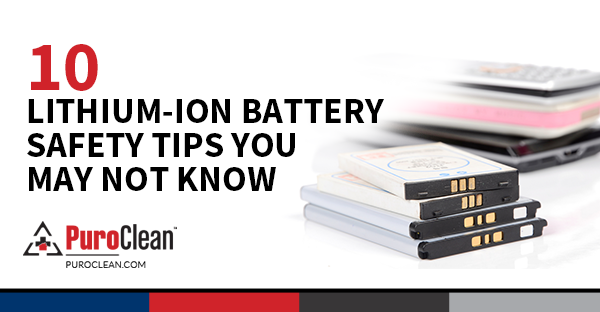Table of Contents
What is a Biohazard?
What is biohazard, short for “biological hazard,” refers to any biological substance that can potentially harm human health, animal health, or the environment. These substances may include infectious agents, microorganisms, or hazardous materials that originate from living organisms.
Proper management of biohazards is critical to prevent disease outbreaks, environmental contamination, and public health crises.

Biohazard materials can range from bodily fluids, medical waste, and animal byproducts to chemical spills and mold. Cleanup and disposal of biohazard materials involve stringent safety protocols to mitigate risks.
Let’s dive deeper into understanding biohazards, their types, situations requiring cleanup, and the process involved.
Categories of Biohazard Materials | What is Biohazard?
Biohazards are classified into four categories based on their level of risk, infectivity, transmissibility, and severity of disease. Here’s an overview:
- Level 1:
- Description: These biohazards pose minimal risk to individuals and the environment.
- Examples: Non-infectious bacteria, viruses like Escherichia coli (non-pathogenic strains).
- Precautions: Standard hygiene measures such as washing hands and wearing gloves.
- Level 2:
- Description: Moderate risk biohazards that can cause disease in humans but are not easily transmissible.
- Examples: Hepatitis B, HIV, salmonella, and influenza.
- Precautions: Use of personal protective equipment (PPE) and adherence to biosafety protocols.
- Level 3:
- Description: Biohazards that pose serious or potentially lethal risks and are often transmitted via respiratory routes.
- Examples: Tuberculosis, hantavirus, and SARS-CoV-2.
- Precautions: Special containment measures, including HEPA filtration systems.
- Level 4:
- Description: Extremely dangerous biohazards that can cause fatal diseases and often lack effective treatments.
- Examples: Ebola virus, Lassa fever, and Marburg virus.
- Precautions: Full-body containment suits and specialized facilities are required.
Common Biohazard Situations Requiring Cleanup | What is Biohazard
Biohazards are not limited to hospital or laboratory settings. Everyday scenarios often require professional biohazard cleanup services. Below are some of the most common situations:
- Crime Scenes and Trauma Incidents:
- Blood and bodily fluids left behind after violent crimes, suicides, or traumatic accidents can pose serious health risks.
- Unattended Deaths:
- Decomposition releases harmful bacteria and pathogens, necessitating thorough cleaning and sanitization.
- Animal Waste or Carcasses:
- Animal waste or remains can harbor bacteria, parasites, and zoonotic diseases that may spread to humans.
- Hoarding Situations:
- Accumulated clutter often hides biohazard materials like mold, animal waste, and decomposing food.
- Sewage Backups:
- Raw sewage contains bacteria, viruses, and parasites that can cause severe illnesses if improperly handled.
- Chemical Spills:
- Hazardous chemicals require specialized cleanup to prevent environmental contamination and exposure risks.
- Mold and Fungi:
- Mold infestations can cause respiratory issues and allergic reactions. Professional remediation ensures proper containment and removal.
- Infectious Disease Outbreaks:
- Outbreaks like COVID-19 or influenza require decontamination of affected areas to mitigate transmission risks.

The Process of Biohazard Cleanup | What is Biohazard?
Biohazard cleanup is a meticulous process that involves specialized techniques and equipment to ensure thorough remediation. Below are the detailed steps:
Step 1: Identification and Assessment
The first step is to assess the affected area. Professionals identify the type of biohazard present, the extent of contamination, and the potential risks involved. This evaluation is critical for developing an effective cleanup strategy.
Step 2: Controlled Environment Setup
Before cleanup begins, professionals establish a controlled environment. This includes setting up physical barriers and creating a designated clean space to prevent cross-contamination. This area also serves as a staging ground for equipment and waste storage.
Step 3: Removal of Contaminated Materials
Contaminated materials, such as carpets, furniture, or porous items, are carefully removed. These items are sealed in biohazard waste bags and prepared for proper disposal following regulatory guidelines.
Step 4: Cleaning and Decontamination
Using specialized cleaning agents and equipment, the affected area is thoroughly sanitized. This includes cleaning surfaces, walls, and floors to remove any residual pathogens or hazardous materials.
Step 5: Hazardous Waste Disposal
Biohazard waste is transported to certified disposal facilities. Adhering to OSHA and EPA regulations ensures that waste is disposed of safely, minimizing environmental risks.
Step 6: Sanitization and Deodorization
To restore the area to a habitable state, professionals use advanced air filtration systems and deodorizing agents. This step eliminates lingering odors and airborne contaminants.
Step 7: Restoration
If structural damage occurred, professionals replace or repair affected materials. The goal is to restore the area to its pre-incident condition, ensuring safety and functionality.
Why Professional Biohazard Cleanup is Essential | What is Biohazard?
Biohazard cleanup is not a task for amateurs. Here’s why hiring professionals is critical:
- Expertise and Training:
- Certified technicians are trained to handle biohazards safely and effectively. They follow stringent protocols to ensure compliance with OSHA, CDC, and EPA regulations.
- Specialized Equipment:
- Professionals use advanced equipment like HEPA filters, industrial-strength cleaners, and personal protective gear to ensure thorough cleanup.
- Safety Assurance:
- Biohazard materials pose significant health risks. Professionals mitigate these risks through proper handling and disposal techniques.
- Emotional Support:
- Cleanup after traumatic incidents requires sensitivity and empathy. Professionals provide discreet services, allowing families to focus on healing.
Health Risks Associated with Biohazards
Exposure to biohazard materials can lead to severe health complications, including:
- Infections: Pathogens in blood or bodily fluids can cause diseases like HIV, hepatitis, or bacterial infections.
- Respiratory Issues: Mold spores and airborne pathogens can lead to asthma, allergies, or chronic respiratory conditions.
- Toxin Exposure: Chemical spills may cause skin irritation, respiratory distress, or neurological damage.
- Gastrointestinal Illnesses: Sewage backups often contain harmful bacteria like E. coli, leading to food poisoning and other digestive issues.
Regulations Governing Biohazard Cleanup
Strict regulations govern the handling and disposal of biohazard materials. Compliance ensures public safety and environmental protection:
- OSHA (Occupational Safety and Health Administration): Mandates the use of PPE and proper training for handling hazardous materials.
- EPA (Environmental Protection Agency): Oversees waste disposal to prevent environmental contamination.
- CDC (Centers for Disease Control and Prevention): Provides guidelines for infectious disease control and prevention.
Conclusion
Understanding what biohazard means and its implications is crucial for public safety and environmental health.
Professional biohazard cleanup services play an essential role in mitigating risks, restoring affected areas, and ensuring compliance with regulatory standards.
Whether it’s a crime scene, a mold infestation, or a chemical spill, entrusting the cleanup to certified experts ensures a thorough and safe remediation process.




 PuroClean of Plymouth Meeting
PuroClean of Plymouth Meeting